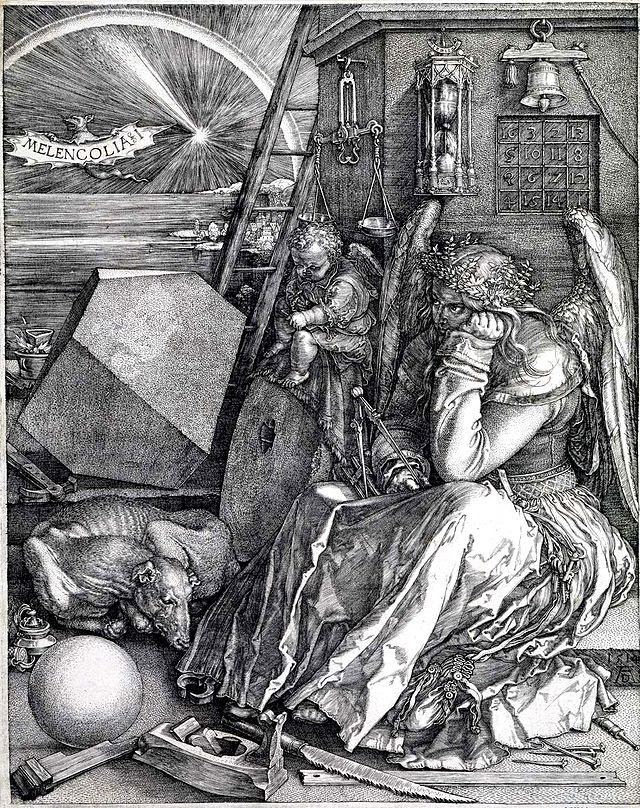Morto da Feltre: Painter of Grotesques
In his brief life of Lorenzo Luzzo, commonly known as Morto da Feltre, Giorgio Vasari wrote that Morto worked with Giorgione on the Fondaco dei Tedeschi in 1507-8. Morto was from Feltre in the Veneto, not too far from Giorgione’s hometown of Castelfranco. Although born about the same time as Giorgione, their lives took different paths before they met up again in Venice. Giorgione went to Venice as a young man but Morto wound up in Rome. Vasari says that he arrived there when “Pinturicchio was painting the papal chambers for Alexander VI.”
 |
| Example of grotesque |
It was in Rome that Morto developed an interest in antiquities that led him to devote himself to a particular form of the painter’s craft. Vasari wrote:
Being a melancholy man he was always studying antiquities, and on seeing some arabesques which pleased him, he devoted his attention to them, while in his treatment of foliage in the ancient style he was second to none. He made earnest search in Rome among the ancient caves and vaults. In the villa of Hadrian at Tivoli he remained many months, designing all the pavements and grottoes… Hearing that at Pozzuolo, ten miles from Naples, there were walls full of grotesques in relief, with stuccos and ancient paintings, he went to study there for several months. At Campana, hard-by, a place full of old tombs, he drew every trifle, and at Trullo, near the sea, he drew many of the temples and grottoes. He went to Baia and Mercato di Saboto, places full of ruins, endeavouring thus to increase his skill and knowledge.*
When Vasari calls Morto “melancholy”, he does not necessarily mean sad or depressed. Melancholia was one of the famous four humors Renaissance humanists believed formed the essence of any human being. Although all these humors were present in every individual, one would inevitably be prominent. So a person could be characterized as sanguine, choleric, phlegmatic or melancholic.
 |
| Albrecht Durer: Melencholia |
In his long study of Albrecht Durer’s famous engraving of Melencholia, Erwin Panofsky noted that melancholy had come to be regarded as the characteristic of most great men.
as Aristotle admirably puts it, they may still be subject to depression and overexcitement, but they outrank all other men: “All truly outstanding men, whether distinguished in philosophy, in statecraft, in poetry or in the arts, are melancholics…” **
Like many of the artists that Vasari wrote about, Morto has largely been forgotten. Their biographies are often overlooked and even omitted in shortened editions of the “Lives of the Painters.” Nevertheless, Vasari placed Morto on a very high plane and credited him for his studies of the images in ancient Roman caves and grottoes. Morto used this knowledge of the grotesque to become a master of ornamental decorative art.
During the Renaissance grotesque also had a different meaning than it does today. It did not mean ugly or hideous but just referred to the kinds of images found in these newly rediscovered grottoes. As Vasari pointed out, Morto used these strange devices to decorate or trim the walls of modern buildings. I suspect that Morto did not go to Venice by accident but that he was called there by Giorgione to assist in the decoration of the walls of the Fondaco dei Tedeschi. Giorgione would do the figures but leave the decorative elements to Morto.
Vasari indicated that like most Renaissance craftsmen, Morto did aspire to do traditional subjects but quickly realized that he could not match the work of Leonardo or Raphael. Nevertheless, Vasari noted that he did try his hand at some Madonnas. He might have even been inspired by Giorgione while working together on the Fondaco dei Tedeschi. Below is a Madonna and Child that does look Giorgionesque.

In his history of Italian painting during the Cinquecento S. J. Freedberg discussed a painting done by Morto shortly after Giorgione’s death in 1510.
In 1511, at Feltre, Morto signed and dated an altar of the Madonna with St. Stephen and St. Liberale (now Berlin Dahlem). Its style is more advanced than anything on the contemporary Venetian scene except for Titian and Sebastiano…this painting reflects the density of form and something of the tenor of emotion of Giorgione’s later art. ***

Morto came to a sad end. Perhaps his melancholic nature led him to give up painting and seek fame as a soldier in the service of Venice. Without any military experience he was hired as a captain of a 200-man contingent but died in a skirmish outside of Zara in Sclavonia in 1524.
Here is Vasari’s summation.
In his arabesques Morto approached more nearly to the ancient style than any other painter, and therefore he deserves great praise. What he began was continued by Giovanni da Udine and other artists with great beauty. But their success does not dim the renown of Morto, who was the originator… ###
* Giorgio Vasari: The Lives of the Painters, Sculptors and Architects, in four volumes, translated by A. B. Hinds, ed. With introduction by William Gaunt, London, Everyman Library, 1927, last reprinted, 1970. V. 3, pp. 1-2. Vol. III, Part III, Morto da Feltro, Painter, and Andrea di Cosimo of Feltro (c. 1474—after 1522; 1490=1554)
** Erwin Panofsky, The Life and Art of Albrecht Durer, Princeton, fourth edition, 1955, p. 165.
*** S. J. Freedberg: Painting in Italy, 1500-1600, Yale, third edition 1993, first published 1971, pp. 164-5.
Link to Frank’s original article here.
back